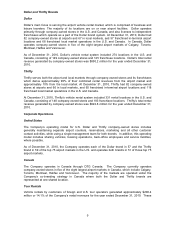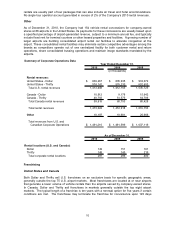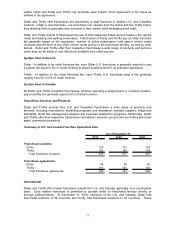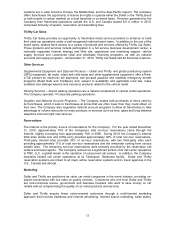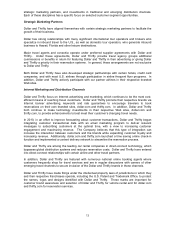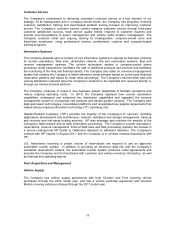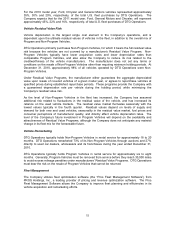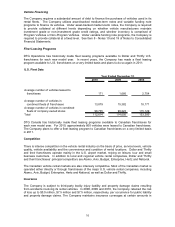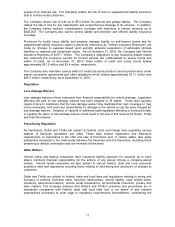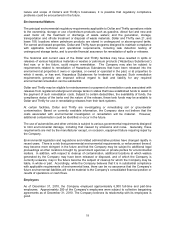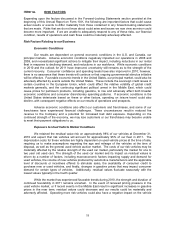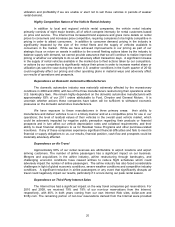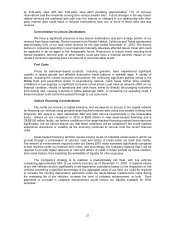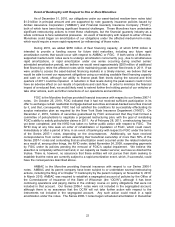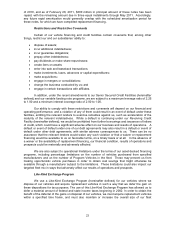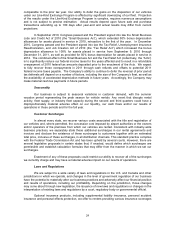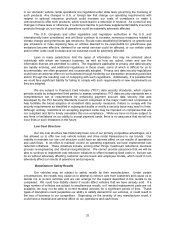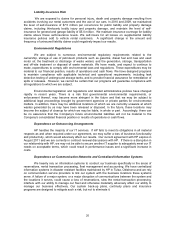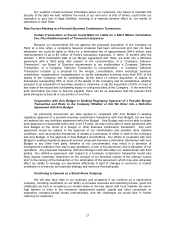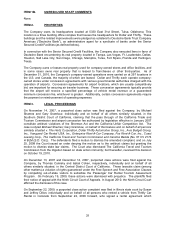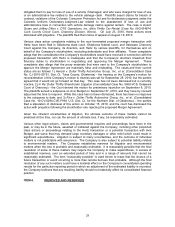Thrifty Car Rental 2010 Annual Report Download - page 20
Download and view the complete annual report
Please find page 20 of the 2010 Thrifty Car Rental annual report below. You can navigate through the pages in the report by either clicking on the pages listed below, or by using the keyword search tool below to find specific information within the annual report.
ITEM 1A. RISK FACTORS
Expanding upon the factors discussed in the Forward-Looking Statements section provided at the
beginning of this Annual Report on Form 10-K, the following are important factors that could cause
actual results or events to differ materially from those contained in any forward-looking statements
that we made. Risks that we do not know about could arise and issues we now view as minor could
become more important. If we are unable to adequately respond to any of these risks, our financial
condition, results of operations and cash flows could be materially adversely affected.
Risk Factors Relating to our Business
Economic Conditions
Our results are dependent on general economic conditions in the U.S. and Canada, our
principal markets. Adverse economic conditions negatively impacted our operations in 2008 and
2009, and necessitated significant actions to mitigate their impact, including reductions in our rental
fleet in response to declining demand, and reductions in our workforce. While economic conditions
in 2010 and the outlook for 2011 have improved, uncertainty still remains as to the strength of the
current recovery. Consumer confidence and spending levels have also improved in 2010; however,
there is no assurance that these trends will continue or that ongoing governmental stimulus initiative
will be effective. Favorable economic trends in the United States, our principal market, could also be
adversely affected by events outside the United States. These include the sovereign credit issues in
certain countries in the European Union, which could affect the relative volatility of global credit
markets generally, and the continuing significant political unrest in the Middle East, which could
cause prices for petroleum products, including gasoline, to rise and adversely affect both broader
economic conditions and consumer discretionary spending patterns. If economic conditions in the
United States deteriorate based on these or other factors, spending on leisure travel could also
decline, with consequent negative effects on our results of operations and prospects.
Adverse economic conditions also affect our customers and franchisees, and some of our
franchisees have experienced financial challenges. These circumstances result in reduced fee
revenue to the Company and a potential for increased bad debt exposure. Depending on the
continued strength of the economy, we may lose customers or our franchisees may become unable
to meet their payment obligations to us.
Exposure to Used Vehicle Market Conditions
We retained the residual value risk on approximately 98% of our vehicles at December 31,
2010 and expect that risk vehicles will account for approximately 95% of our fleet in 2011. The
depreciation costs for these vehicles are highly dependent on used vehicle prices at the time of sale,
requiring us to make assumptions regarding the age and mileage of the vehicles at the time of
disposal, as well as the general used vehicle auction market. The costs of our risk vehicles may be
materially affected by the relative strength of the used car market, particularly the market for one to
two year old used cars. The strength of the used car market and its impact on residual values is
driven by a number of factors, including macroeconomic factors impacting supply and demand for
used vehicles, the volume of new vehicles produced by automotive manufacturers and the applicable
level of discounts or incentives offered to stimulate sales, the availability of consumer credit to
purchase new or used vehicles, and finally, changes in gasoline prices that may impact consumer
demand for certain types of vehicles. Additionally, residual values fluctuate seasonally with the
lowest values typically in the fourth quarter.
While the market has experienced favorable trends during 2010, the strength and duration of
continued favorability in 2011 remains uncertain. In the event of renewed pricing pressure in the
used vehicle market, or if recent events in the Middle East result in significant increases in gasoline
prices in the near term, residual values could decrease and our results could be materially and
adversely affected. Operating more risk vehicles could also have a negative impact on the vehicle
19


